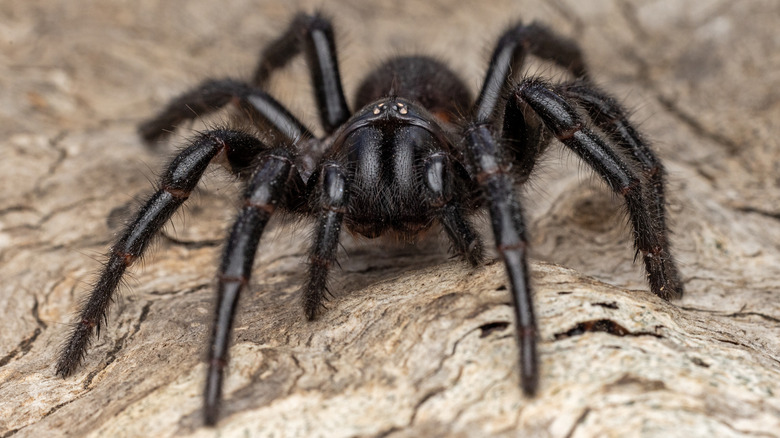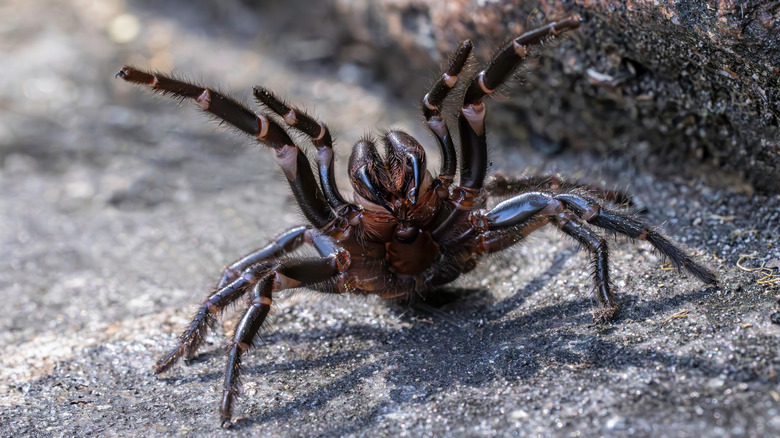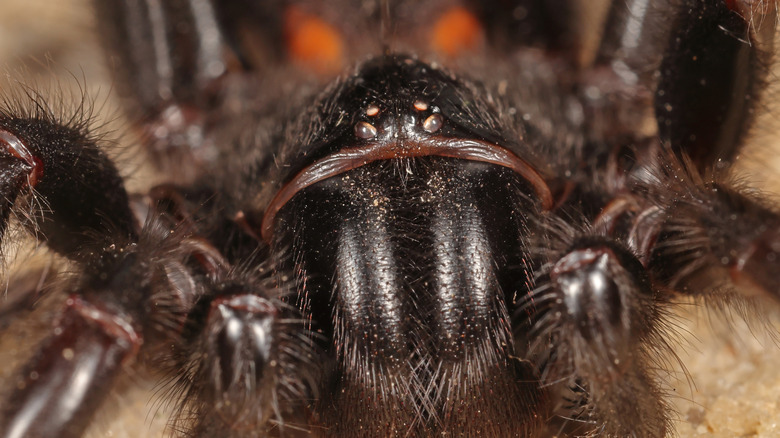The Fastest Killing Spider In The World Has An Unexpected Death Rate
Whether we like it or not, there are several types of dangerous spider in the world and that's just something we have to live with day to day. For some people, that concern is more excruciating. That is, those who happen to live in an area where deadly spiders exist have to think about this unsettling aspect of the natural world much more than others, who otherwise live a mostly arachnid-free existence.
Luckily, most of us fall into the latter category. A 2017 study published in Toxicon involved a review of the literature on verified bites and stings from spiders and scorpions and concluded just 0.5% of all spider species were dangerous to humans. What's more, the researchers stated that the actual number could be even lower, though they did note that in some countries, bites from dangerous arachnids can result in serious health problems.
That's certainly the case for several species of Australian funnel-web spider, one of which is technically known as the world's deadliest spider due to the fact it can kill relatively quickly. But when you actually look into the record of this "deadly" arachnid you find that not only does it take longer than you might expect to die from a bite, the funnel-web has a surprisingly low death rate, with no bite victims dying from their symptoms since 1981.
Sydney funnel-web spiders can kill quickly, but not as quickly as you might have heard
There are currently more than 40 known species of Australian funnel-web spider, so named for their ability to spin funnel-shaped webs. Several of these species, including the Newcastle funnel-web spider (Atrax christenseni), Blue Mountains funnel-web spider (Hadronyche versuta) and the southern and northern tree-dwelling funnel-web spiders (H. cerberea and H. formidabilis) have been known to deliver life-threatening bites. But the Sydney funnel-web spider (A. robustus) is widely considered to be the most deadly.
While funnel-web spiders can be found across Australia, these shiny, dark-hued arachnids are — as the name suggests — found in Sydney and eastern Australia and have bodies that can grow to sizes of between 0.4 to almost 2 inches. The legs can add a further 2–3 inches of size to the Sydney funnel-web, which bears a pair of alarmingly large fangs capable of piercing various types of material (including your fingernails) in order to deliver the spider's deadly venom.
That venom contains several neurotoxins which are responsible for producing symptoms in those unfortunate enough to get bitten. These toxins attack the body's parasympathetic nervous system, initially causing pain, which soon progresses to muscle contractions and spasms, hypertension, gastrointestinal distress, and cardiac problems. Victims will also experience increasingly severe breathing difficulties, and, if left untreated, will die in a few hours. While it's widely reported that this spider can kill in 15 minutes, according to a 2024 article published in StatPearls, research has shown that 28 minutes was the median time in which severe symptoms occurred, and that while death can happen within 15 minutes in small children (making the Sydeny funnel-web spider one of several venomous species that can kill in minutes), adults will typically die within 3 days if left untreated. But, if you take a look at the death rate of this spider, you'll find just one fatality in the last four decades.
The Sydney funnel-web spider hasn't caused any human deaths for almost half a century
Back in 1981, Dr. Struan Sutherland and a team at the Commonwealth Serum Laboratories (a government organization created to develop life saving vaccines and medications which has since been privatized) created an antivenom for the Sydney funnel-web spider which proved remarkably effective. In fact, not a single death from a Sydney funnel-web has been recorded following the introduction of this antivenom alongside guidance from the CSL team that advised using compression and immobilization following a funnel-web bite. The antivenom is now available at most major hospitals, which means as long as a victim is given swift treatment, they have an excellent chance of survival.
Prior to 1981, there were 13 recorded deaths as the result of a male Sydney funnel-web spider bite, and none since the development of the antivenom. This is despite the fact that, according to the Australian Museum, between 30 and 40 people are bitten every year. The 2024 StatPearls funnel-web article claims that there has been "1 fatality" since 1981 which was attributed to delayed presentation, but that appears to have been the result of a redback spider bite. The University of Melbourne also states that the funnel-web hasn't killed anyone since 1981. In short, the funnel-web spider, known as the deadliest spider in the world, is thought to have killed just over a dozen people and nobody in the last half century.


